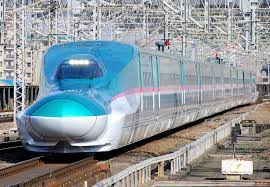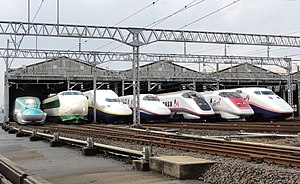
Introduction: High Speed Rail Transforming Transportation for the Future
honkai star rail hentai: High speed rail is recognised as a transformative force in the field of transportation in an era characterised by technology developments and the search for sustainable solutions. High-speed rail networks provide a glimpse of the future of quick, efficient, and environmentally responsible transportation. This essay explores the revolutionary effects of high speed rail on how we travel, tying cities together, and influencing the direction of transportation. Let’s investigate how high-speed rail is changing how we travel, from cutting down on journey times to fostering eco-awareness, and find out how it might contribute to a better, more connected future.
1. Enhancing Connectivity and Efficiency:
Passengers may travel great distances in remarkably less time thanks to high speed rail systems, which are built to operate at speeds that are significantly faster than those of ordinary trains. High speed rail improves connectivity by bridging gaps between cities and regions, enabling seamless travel experiences. Reduced travel times not only make isolated locations more accessible but also promote economic growth by promoting trade, business, and tourism.
2. Sustainable Travel Solutions:
High speed rail is emerging as an environmentally sensible option to air and road travel as sustainability takes front stage on the global agenda. High speed rail is a more environmentally friendly option for long-distance travel since it emits less carbon dioxide per passenger-kilometer than aeroplanes. Investing in high-speed rail networks is consistent with nations’ commitment to sustainable development and environmental stewardship as they try to lower their carbon footprints.

3. Economic Benefits and Job Creation:
High speed rail initiatives promote economic growth by generating a large number of job possibilities. High-speed rail systems need a competent workforce for both initial construction and continuous operations, creating employment opportunities and promoting economic stability. Additionally, investments in high-speed rail frequently entice business endeavours from the private sector and promote the growth of ancillary industries, adding to the general economic prosperity of the regions it serves.
4. Alleviating Traffic Congestion:
High speed rail presents a possible answer to the ongoing traffic congestion issues in urban areas. High speed rail encourages travellers to choose rail travel rather than clogging up highways and airports by offering an effective and time-saving method of getting between locations. This change can ease pressure on the existing transportation infrastructure, lessen traffic congestion, and improve road safety.
5. Promoting Multimodal Connectivity:
High speed rail networks promote multimodal connectivity by working in harmony with other modes of transportation. Passengers can easily switch between different means of transportation by integrating high-speed rail stations with existing transit networks, resulting in a seamless and effective travel experience. Because of how connected everything is, travelling is easier and more convenient overall, which encourages more people to choose sustainable transportation.
Conclusion:
A significant force reshaping mobility in the future is high-speed rail. It has established itself as a crucial role in influencing how we travel thanks to its capacity to link cities, advance sustainability, foster economic growth, and reduce traffic congestion. We are getting closer to a time when travel is not only faster but also greener and more connected as countries continue to invest in high speed rail networks. High-speed rail is a prime example of the effort to create an efficient and sustainable society where mobility is seamlessly incorporated into our lives, across borders and paving the way for a better future for future generations.








